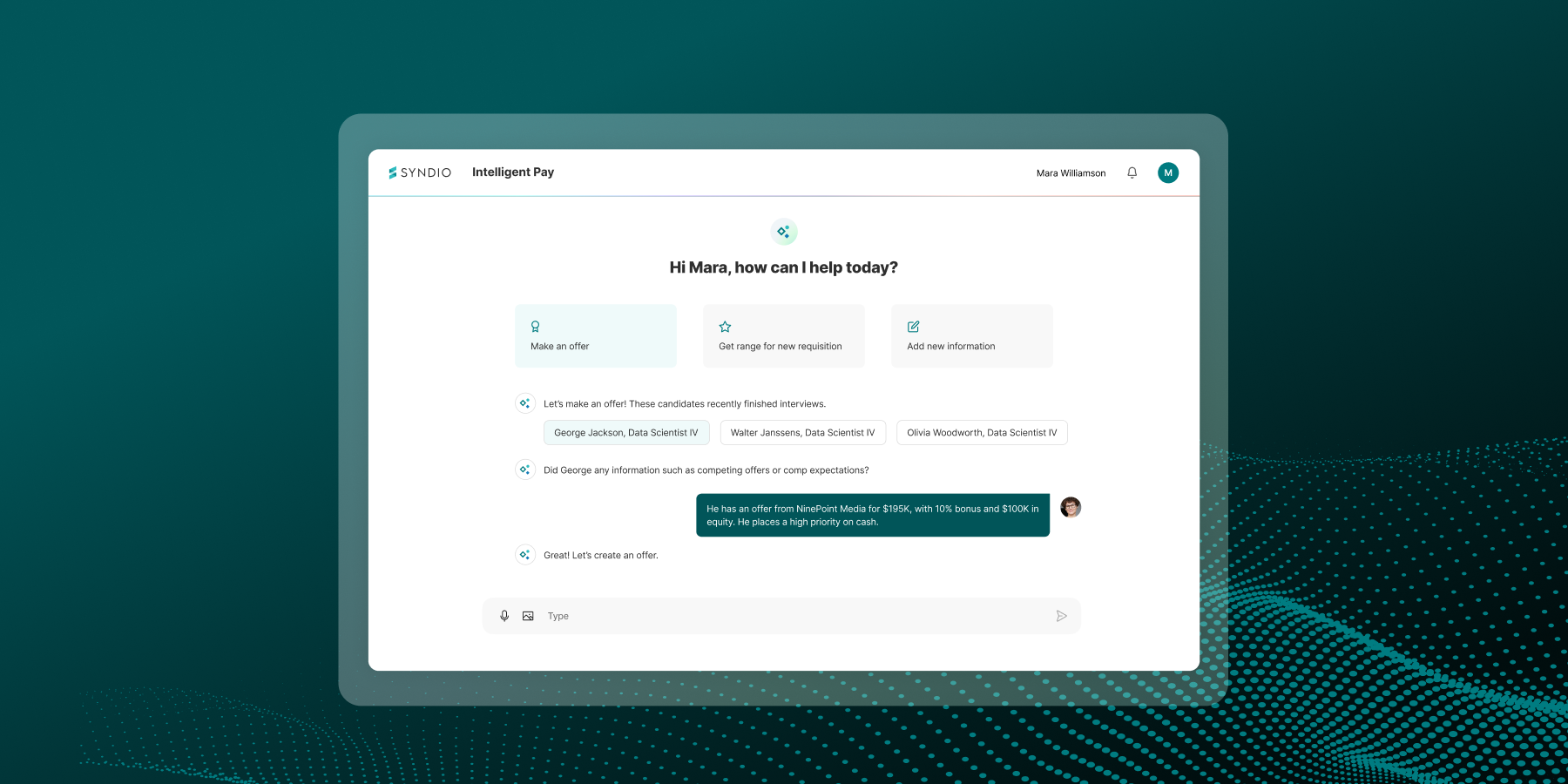How are industry leaders improving employee recruitment by incorporating workplace equity into their processes from the start? During our recent webinar, Baking Equity in from the Start, we had the opportunity for an in-depth discussion with Adam Swanlund, Compensation Manager for Elevance Health (formerly Anthem) about some of the key steps he’s taken and what he’s learned in the process.
Q: What really triggered the idea that “We need to do something different” with employee recruitment and pay equity?
Adam: One of the very first things that I was challenged with, and this came as a directive from our CEO, was transparency and reporting on specific metrics around pay gap analysis. We worked with a consulting firm in 2020 and applied very common controls around experience, geographic differentials, etc., and found as an organization we were in a pretty good place in terms of gender and ethnic dimensions. But the challenge with that is, you don’t know what you don’t know. And until you start diving into specific areas of opportunity and thinking more critically, it’s a bit more difficult to say that you’re on par with others without knowing those specific measures.
Again, our CEO, because she is a leader who knows the importance of this, challenged our comp function to ask, “Are there third-party neutral organizations out there that can certify us, look at what we’re doing and say, these are industry best practices that are substantial, justifiable and defensible?”
As part of that, I started researching and found the Fair Pay Workplace certification, which obviously is a great sistership with Syndio and uses the Syndio platform. And so in a very short six months after starting with the organization, I drove this as a priority:
“We are leaders in our industry and we want to be leaders in pay equity.”
Q: What changes to your process did that require?
Adam: One of the first requirements of that certification, for those that are unfamiliar with Fair Pay Workplace, is that we no longer ask about the current salary of the candidate [during the employee recruitment and hiring process]. In many jurisdictions that’s illegal now anyway, but we’ve taken that to the next step, as we no longer ask about pay expectations.
“We as an organization have set a precedent that we’re going to do what’s right for the company and right for the employee.”
Q: Where did you find challenges and how did you address those?
Adam: The very first thing that I had to do to get buy-in from our HR team was meet with our top-level CHRO. I shared all the specific data elements, the findings when we first started using Syndio as our tool, the control factors, and how we look at the data.
The CHRO then challenged me to go to her five direct reports (CHROs of each of our individual lines of business) to have the same conversation and discuss why this is the right thing to do. Not just because it’s the law, but if we’re going to represent ourselves as leaders in our industry and a leader in the concept, we’ve got to start putting our money where our mouth is.
When [the CHROs] started thinking about some of their candidates and getting feedback from HR and comp, [they realized that] if they wanted to make an equitable offer that’s competitive with the external marketplace and our internal equity, they were going to be talking 30% more, even 40% on a rare occasion, [than they were offering]. And that’s hard to stomach when they’re typically used to starting everyone at the beginning of a salary range because that’s the pressure they have from their customers and their business financials.
We had to have a realistic conversation, setting the expectation that we as an organization have set a precedent that we’re going to do what’s right for the company and right for the employee, that we’re going to have to make some hard decisions, and we’re going to have to find ways to fund these specific aspects.
And so it’s the willingness to listen, change, and shape the way that we work through things as well as understanding that you need to be able to justify why you’re making specific pay decisions. It’s about having a meaningful conversation, listening to the concerns and the limitations of the business, but also letting them know that if you’re seeing an equitable offer as a 30% to 40% increase, maybe you should look at your current employees and ask yourself, are there underlying systemic issues or remediation needs for our current employees as well?
As part of the certification for the Fair Pay Workplace, those are things that we’re committing to, we’re continuing to budget for those, and in 2023 we’re going to be making those investments.
“One of the things that I think is the biggest hurdle is reminding people what a salary range is and how to interpret place within that range.”
Q: Tell us about some tactics that you used to shake up the process itself. It sounds like there’s an education element and an ongoing discussion too?
Adam: The first thing is ongoing education; we have to continuously make sure those frontline recruiters and talent acquisition people who are the face of the company and the brand to the prospective candidates that we want to hire are knowledgeable enough to speak intelligently and understand the process changes.
And so, for example, we talked about not asking those specific questions around salary expectations or current salaries [during the employee recruitment and hiring process]. We also now provide a salary range when we first start that conversation because we all hate when we get to the end of the interview process, make an offer to a candidate and they say, “Oh, that doesn’t meet my expectations.”
One of my favorite process changes, and actually we are currently implementing this organization-wide, is the Syndio Pay Finder™ tool that sits on top of the PayEQ® software platform. It is a game changer for us because of the ability to provide visuals for those who are making the decisions, so they can understand the equitable range based upon the specific factors that are relevant to our candidates. “If you want to extend an offer that’s not just market competitive but equitable internally, here are your guardrails.” And it’s an eye opener.
→ Learn more about how Elevance Health uses Pay Finder to maintain equitable pay for every new hire
When we were piloting this with about 10% of our employee recruitment population, one of them had a discussion with the president of our health solutions division, who wanted to pay some candidates at the maximum of the range with a top tier bonus target.
I showed the recruiter in the tool that it was a bad pay decision if we really wanted to think about internal equity. The recruiter went back to that president with the facts and numbers. Within 15 minutes I got a response back from that recruiter that said the president understands the information. She wants to go actually about 5% below the maximum equitable offer. So that if we do need to make a counter offer, we can go ahead and do that.
So this is a change management activity. We are relentlessly communicating across all of the different mediums and in person at manager forums.
We’ve created a whole dynamic intranet page where it educates hiring managers on what the definitions are, types of movements, and why it’s important for them to think about offers from an internal equity and an external competitiveness.
“We’ve created a role card that Talent Acquisition (TA), gives to the hiring manager and it reminds them, ‘As a hiring manager, this is your duty, this is the TA duty…and this is Compensation’s duty.’”
Q: Was there a broader communications campaign?
Adam: The most senior leadership in the organization understood, because those are conversations they’re having from a board perspective. But as you go farther into the different layers of the organization, their connectivity to that sometimes is less. And so I feel that we kind of failed in the very first iteration of the communication because we tried to live within the very tight framework of our corporate communications team, and we did the traditional email blast and Intranet post.
People have to be checking that on a daily basis. They have to not just read it, but they have to then retain it and know it’s important. So we took this to the next level by working with a Learning & Development member, creating what we call a people leader journey.
We’re using videos, infographics, and role cards. We’ve created a role card that Talent Acquisition (TA), gives to the hiring manager every time they start a strategy session and it reminds them, “As a hiring manager, this is your duty, this is the TA duty, this is the HR business partner’s duty, and this is compensation’s duty.”
That provides transparency for all the different players so they know who does what. Beyond that, the Intranet resource is very dynamic and even goes all the way down to the rudimentary definitions of a promotion, a lateral, a demotion. And for those changes, here are the business rules on what you can do as a manager without needing to get additional approvals or jump through hoops.
And so that’s been very helpful and that’s something that’s going on even more.
Having tough conversations is scary. We as the HR people are the warriors and we are the faith. We have to be willing to have the hard conversations and stand up for what’s right, not just for the employee but for the company as well.
More real-world workplace equity advice from Elevance Health
Adam shared even more during the webinar, including when a candidate outside of the pay range is really a square peg in a round hole, how to solve the problem of candidates sharing their current salary, how Elevance is using age as a proxy for experience, and other tips. Watch the recording for all of his useful insights — and read the Elevance case study to learn how they use Pay Finder to maintain equitable pay for every new hire.



